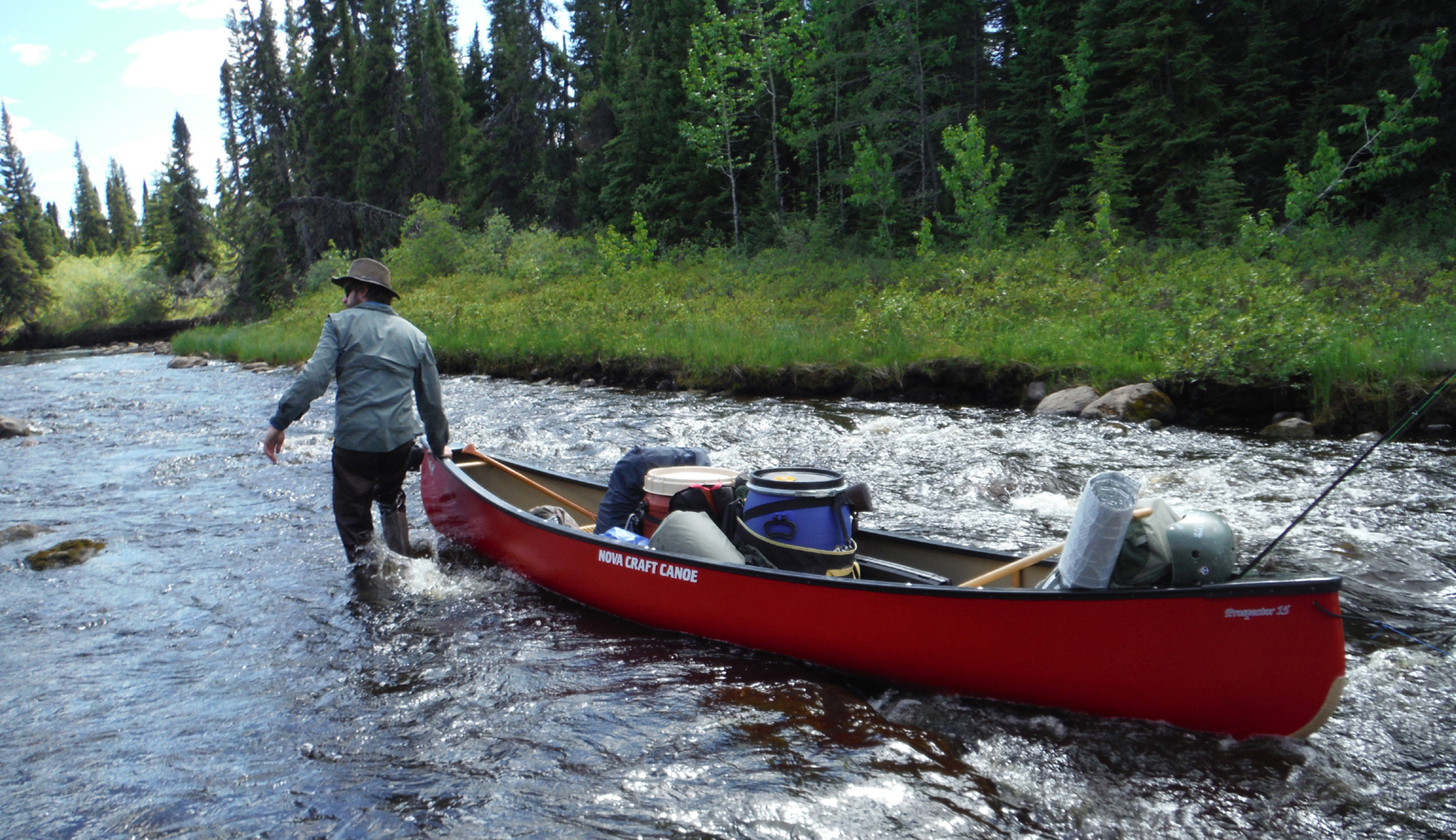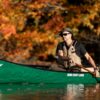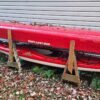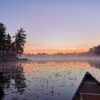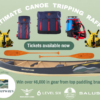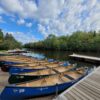At age 29, Adam Shoalts has a fairly extensive and impressive resume: he’s been named among the top 100 explorers by National Geographic, he’s a fellow of the Royal Canadian Geographic Society, a member of the illustrious Explorer’s Club, a PhD student and a bestselling author.
Adam was recently in town to give a presentation in support of his book Alone Against the North, published by Penguin in October of last year. Alone Against the North tells the true story of Adam’s 2012 Royal Canadian Geographic Society sponsored expedition to the Hudson Bay Lowlands, an area Adam refers to as the Canadian Amazon, where he and his paddling partner Brent set out to explore and map the remote Again River. But Brent didn’t last long, abandoning Adam, alone, in the kingdom of polar bear with a long ways to go before reaching the Again. Needless to say Adam returned to civilization with quite a tale to tell. We had a chance to sit down with him prior to his presentation and pick his brain over dinner.
What do you remember about your first canoe trip?
I can’t remember much of anything about my first canoe trip. One of my first memories of boating, I was pretty young maybe 7 or 8, was working on a raft like Huckleberry Finn style. I was always wanting to build rafts and take them out on the swamp. And I remember one time we built this raft out of birch logs and construction debris and whatnot (it probably wouldn’t have passed your [TuffStuff] tests) and I remember carrying it down to the river with my brother. This thing wasn’t built very well; it had nails sticking out from the birch logs all over the place. Anyways, when we were carrying it down, I dropped it and it cut my shin all the way down. I had to get stitches on my shin. But, I loved doing that kind of thing. I have a quote in my book – I try to start every chapter off with a quote from some of my favourite old books and things – and I have this one from Wind in the Willows: “there is nothing – absolutely nothing – half so much worth doing as simply messing about in boats” And I take that to heart. As a kid I loved building boats and taking them out on the water. My father is really big into building these kinds of things, making things. He carves all of my paddles. The first canoe we built together was when I was 14. We built a cedar strip canoe and paddled it that summer together. Those are probably some of my best and earliest memories in boats.
What’s your favourite camp meal to prepare after a long day of paddling?
My favourite camp meal? Well, if I’m up in the subarctic it’s always nice if you have some fresh trout that you’ve caught. I travel as light as possible because I spend more time portaging and dragging my canoe than paddling it if I’m in muskeg swamp which means I don’t carry pans and I just cook my trout on green sticks over the fire. Up near Hudson’s Bay you can catch a lot of nice brook trout so that’s probably my favourite meal: catch a couple brook trout as I’m travelling and just cook them over the fire. As far as something that I pack, like rations? My favourite meal would be Backpacker’s Pantry Sweet and Sour Chicken. Just add boiling water, seal it up and it cooks for 13 minutes. I’ve never really been one for variety, I only pack two meals on expeditions: Beef and Broccoli Stir Fry and Sweet and Sour Chicken. That’s it. They’re both good and they both have a lot of calories. I always eat the whole pouch myself. I’m pretty hungry on those trips and I’ll eat just about anything.
What are the best and worst parts of solo tripping and what kind of advice do you have for somebody embarking on their first trip alone?
There’s a real simplicity to solo tripping. You don’t have to worry about interpersonal dynamics or group morale. All of those kinds of questions go out the window. Also, if you’re by yourself in the wilderness for weeks or months at a time you’ll see a lot more wildlife. I see a ton of wild animals when I’m by myself because I’m not talking to someone else, making noise and scaring away the caribou crossing the lake or the fox on the riverbank. Another thing that probably doesn’t occur to a lot of people is that most of my expeditions (at least half of them) I do in the Hudson Bay lowlands, far from any of the well travelled routes, where it’s mostly all muskeg and there’s more water than land. The landscape is like a giant sponge that sucks up water, it’s all marsh. So finding a big enough patch of dry ground to put a tent on can be a real challenge. An unexpected bonus of doing solo trips is that with more people, inevitably somebody will end up sleeping on the swamp. Dry land is at a premium and when you’re by yourself you get the pick of the best spot.
The worst thing about being alone is that its inherently risky: if you slip and hit your head on a rock or something goes wrong, there’s no one there to help you. There’s no margin for error. It’s more dangerous and you have to be more cautious, and really think about everything you do: every time you put your foot down as you’re wading through a river, every time you swing the axe, or what have you. You can’t take the same risks.
The first rule of any canoe trip is just to have fun – I mean, that’s the point of it all, right? Even now, as I’m planning an arctic five month expedition, I wouldn’t do it if I didn’t think it would be fun. So, I’d tell them just to have fun, enjoy the experience and bask in the solitude. The first days of the first trip will be hard but it gets easier as you go on.
When you’re not out on an expedition, you’re a PhD student in the History department at McMaster University, can you tell us a bit about your dissertation research?
My academic research involves archaeology, geography and history. The research I do for my dissertation is pretty much the air I breathe. It’s about northern Canada, the historical geography of those lands and the interactions between aboriginal people and early explorers; sort of the untold history of a lot of those rivers. I do a lot of research before and after trips, not so much during them but I would say my research is pretty connected to the type of expeditions I choose to do and I can always find an interesting tidbit in an old explorer’s journal to use in my dissertation.
Where are you heading next? You mentioned earlier that you’re planning for a major expedition in the Arctic Circle…
Yeah, I might do a couple of weekend or week long trips beforehand but I’m going back up to the Arctic this summer and am going to be paddling up in the Northwest Territories, north of Great Bear lake. That’s this summer, yeah. It will be like a training/scouting trip for the big one [five months in the Arctic Circle]. I want to see what the water levels will be like on the East river in July, because that’s maybe around the time I’m going to hit it. I also want to meet with some of the pilots and maybe lodge owners since I’m relying on these people not to forget about me and my canoe drop. I’ve had pilots forget about me before.
Learn more about Adam and his exploits at adamshoalts.com
